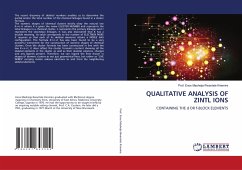
RING THEORY AND THE GENESIS OF OIL AND GAS
Versandkostenfrei!
Versandfertig in 6-10 Tagen
53,99 €
inkl. MwSt.

PAYBACK Punkte
27 °P sammeln!
Hydrocarbons play vitally important roles in the economic development of nations. As we all know, the major source of hydrocarbons is petroleum. The most prevalent hydrocarbons in petroleum are mentioned as well as some of the products that are derived from petroleum. The analysis of hydrocarbons using skeletal numbers is highlighted rather than categorization. The revelation that the geometrical shapes of hydrocarbons that we commonly use which were started by a German chemist August Kekule about 160 years ago are simply mathematical derivations of chemical cluster theory is highly phenomenal...
Hydrocarbons play vitally important roles in the economic development of nations. As we all know, the major source of hydrocarbons is petroleum. The most prevalent hydrocarbons in petroleum are mentioned as well as some of the products that are derived from petroleum. The analysis of hydrocarbons using skeletal numbers is highlighted rather than categorization. The revelation that the geometrical shapes of hydrocarbons that we commonly use which were started by a German chemist August Kekule about 160 years ago are simply mathematical derivations of chemical cluster theory is highly phenomenal. The hypothetical concept of cluster stripping to generate new hydrocarbon clusters is well demonstrated. Due to the presence of a wide range of several hundreds of hydrocarbon clusters in the petroleum, another hypothetical concept named mutation theory of hydrocarbon chemical clusters has been included as another way in which the hydrocarbons could be able to multiply to generate such a wide range of clusters.












